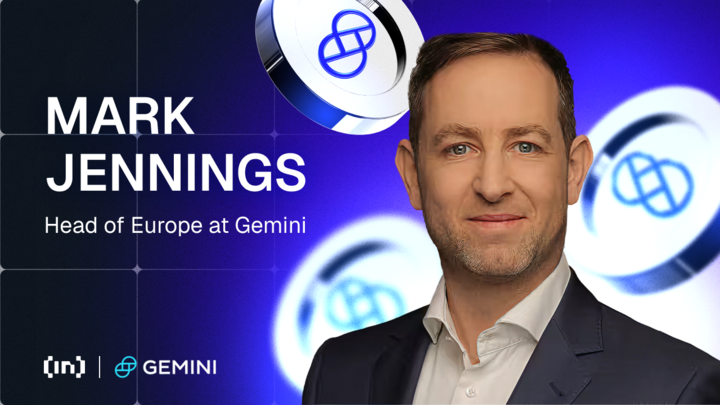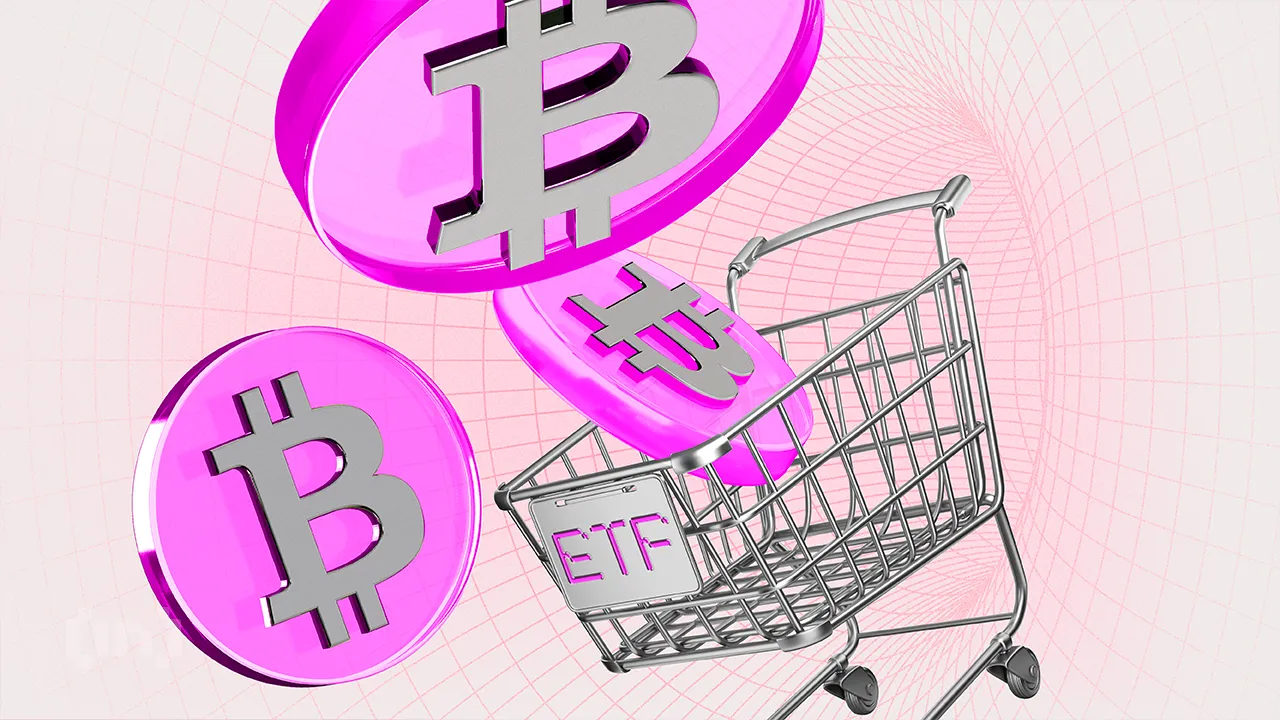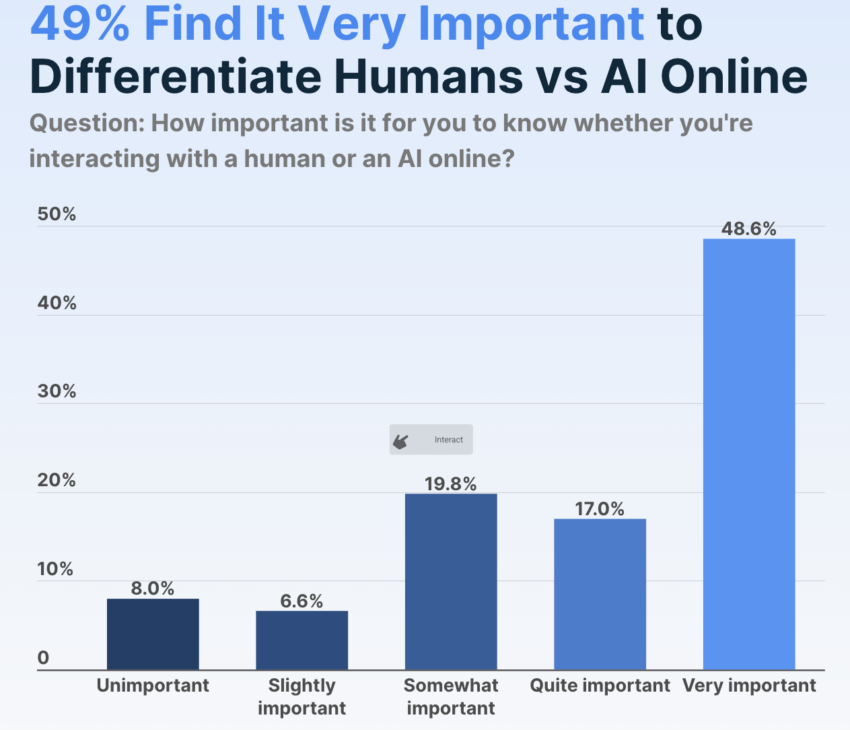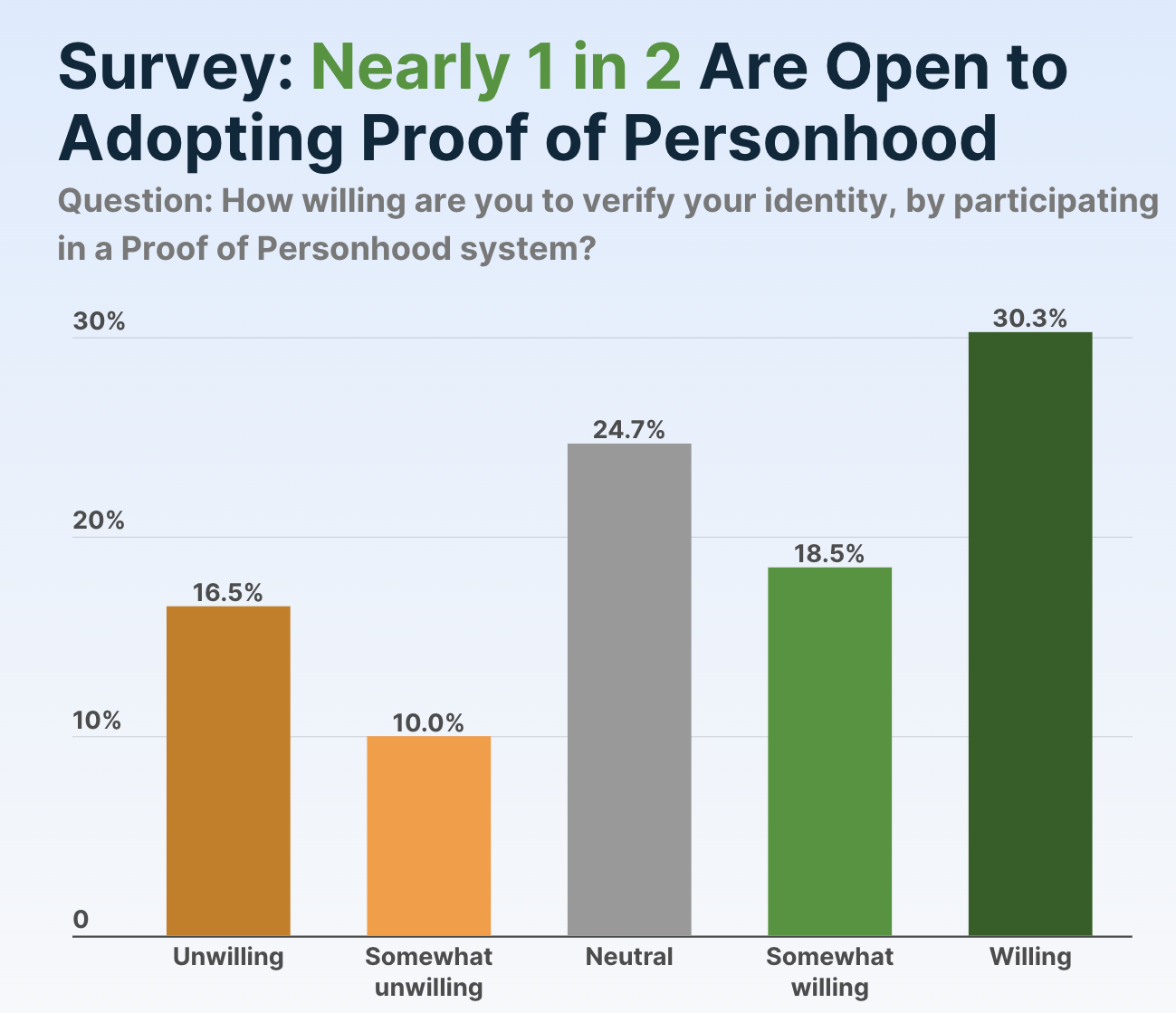Market
MiCA Boosts Gemini’s Expansion Plans Across Europe


During the 2025 edition of the Paris Blockchain Week (PBS), BeInCrypto sat with Mark Jennings, Head of Europe at crypto exchange Gemini, for an in-depth conversation about the exchange’s regulatory-first strategy and its expanding European footprint. Gemini—founded by the Winklevoss twins—has spent the last decade cementing its reputation as a secure and compliant platform for digital assets.
With the implementation of MiCA in Europe and the company’s pending IPO, Jennings emphasized how regulatory clarity is paving the way for broader crypto adoption and Gemini’s next growth phase across the continent.
How Gemini Sets Itself Apart in a Crowded Exchange Market
If you look at it as a whole, Gemini was born in 2015 from the founders who saw the future around Bitcoin and were early investors there. The key that Gemini has looked at is “how do we secure longevity here?”. For our position, it’s always been “ask for permission”. So, we’ve always taken the regulatory route first in terms of establishing ourselves. If you look at the US, we were registered as a New York Trust and then you move into Europe, registered as a VASP in Ireland. We were the first to get that in Ireland.
I think the key for us has been what is happening in Europe this year when we see MiCA being implemented. It gives us a secure platform to grow into Europe, certainty in the regulatory environment, and how we grow. That’s been at the core of what Gemini has done for the last 10 years, and we see that’s a key way for us to continue to build and grow. One is that we’re a trusted, safe, and secure platform for you to unwrap your fear, trade, and provide secure custody. For us, it’s key for our customers to be able to go on that journey with them and understand if there’s a secure regulatory infrastructure to do that. And now that there’s clarity in Europe, we’re going to continue to build and grow our businesses.
Crypto Regulation in Europe vs. the US
In my role as head of Europe, I’m focused on what the European regulators are looking at and it’s a positive move to see MiCA come into effect at the end of last year.
What I do see as positive if you look to the US, a cryptocurrency stablecoin regulation is on the table for discussion; you know, we can’t manage different regulatory environments but we do see that there is a positive sentiment towards it. They’re looking to put a framework in place, and we see that as a positive for crypto as a whole. From my perspective, we can see that each regulator is now starting to address that.
Also, we’re serving different customers, and so we work under the regulation here in Europe, but each ecosystem has a regulator that should provide positive mechanisms.
User Experience on Gemini
If you see our user experience within the app and within our ActiveTrader desktop functionality, we’re looking at a simple and secure UI ; so being able to see your assets, being able to fund your account very easily, being able to trade easily and knowing that you’ve got the security of Gemini’s customer platform behind it.
For us, it’s a very clear UI and very clear action points for someone to be able to access the platform and Cryptopedia and other educational resources that we have because understanding the different tokens that are available and the different features is part of the journey. That’s also what Gemini wants to do: help with education.
Gemini’s Approach to Platform Security
We’re talking about security from an insurance perspective, and understanding that our insurance infrastructure was built on a proprietary technology that was built at Gemini. I think that’s important for us to own that. We know how important that is for the ecosystem as a whole. For us, it’s been developed on our original New York Trust infrastructure.
We’ve built and replicated that as part of our MiCA licensing. So, we see that this really robust framework is what is underpinning the security there. If you look at the AML frameworks as part of our European regulation, it’s an important part for us to make sure that we know who our customers are, that we’re able to onboard them, and give them a really secure place to trade crypto.
Emerging Market Trends
I think there will be more mainstream adoption, understanding that crypto assets are now an accepted asset as part of somebody’s investment decision, and they’re looking at that. So, I think as that developed, the regulatory infrastructure has given people confidence. And from some of the statistics we’ve seen, that’s one of the biggest barriers to entry.
People have been uncertain about the regulatory infrastructure and where people sit. So now that we see that barrier being clearly set in the sand, people can start to engage more with crypto assets in general.
Is Crypto Losing Its Edge or Gaining Maturity?
I wouldn’t say cryptos are becoming boring [laughs]. What we’re seeing is that there’s a maturation of the market, and the market goes in that direction. And then people are making investment decisions. Institutions are also involved there; if you look at the synergies between markets, where there are more players within that market, it changes the market’s characteristics as a whole. I don’t think cryptos are ever going to be boring.
If you see what’s happening—the underlying technologies being built, the different networks that are there, the increasing pass-through, the increase in the transaction process—I don’t find any of that boring. I think it’s really exciting.
Gemini and DeFi
We’re not really in the DeFi space. We’re continuing to build our on-chain products, but at the moment there’s nothing in the DeFi space specifically. I think it’s an area of innovation that we’re continuing to see grow. Gemini, at its core, is an exchange and a custodian, and I think that’s what we’ll play going forward. But the on-chain team is definitely building and growing. We’ll see if anything comes to that.
I think we’re focused on our core strengths. I think that’s the area where we continue to build and grow. If you look at it, every player in the market is looking to build in a different fashion and solve a different problem. For us, we’re there as one of the largest exchanges. We want to continue to facilitate that. So I wouldn’t say that.
The Profile of Gemini’s Clientele
I think we’ve got a broad client base. We serve retail customers and institutional customers the same. I think we’re engaged with people who value the safety and security aspects of what we do. The fact that we took that regulatory viewpoint very early on resonates with a lot of customers.
I think we’ve built a product that we feel is fit for the environment, and we see customers come to us for that. I don’t know if we’ve targeted customers directly. We’ve built what we think is the best product for customers who want it.
Strategy to Recruit New Customers
Education is one thing. Giving people an understanding of what we can bring to them, whether it’s safety and security of custody, the ability to trade, the ability to fund. I think education is key.
The second piece is the simplification of the process. How do we help them along that journey, from onboarding with us, to being able to fund their account, to being able to use these assets ? That’s key. We want to make sure it’s simple and straightforward and that they understand what’s there.
And the third piece would be to continue to innovate. The crypto space moves very quickly. We want to leverage those technologies to help improve the process and be able to allow people to engage with the crypto ecosystem using the Gemini platform.
These are the three pillars I see.
Gemini’s Vision for Growth
In my role as Head of Europe, the regular landscape has been key. We’re really looking to build our business in Europe. We want to provide a product that can engage all 32 countries that are under the EEA umbrella.
For us, it’s about a very simple and clean UI, getting people very clear access to the platform, and being able to cater to their needs, whether it’s from a funding perspective or from a trading perspective. Keep evolving our products. We get feedback from our customers; we want to continue to evolve on that.
Expectations from Paris Blockchain Week
There are a number of our partners and competitors here. Being involved in the ecosystem, you understand what people are working on, what startups are doing, and how they’re trying to solve some of our problems. I’m here to meet as many people as I can and learn. In this space as a whole, learning is the number one tool.
The second thing is to make people aware of Gemini and our plans in Europe to continue to grow the business. There are so many great businesses I want to know more about. If I get time throughout the day, I will certainly do. But I also want to make sure people see the Gemini team and that you get to speak to us face to face. We want to learn more, we love getting feedback, and we want to be able to adapt on that.
Disclaimer
In compliance with the Trust Project guidelines, this opinion article presents the author’s perspective and may not necessarily reflect the views of BeInCrypto. BeInCrypto remains committed to transparent reporting and upholding the highest standards of journalism. Readers are advised to verify information independently and consult with a professional before making decisions based on this content. Please note that our Terms and Conditions, Privacy Policy, and Disclaimers have been updated.
Market
Bitcoin ETFs End Dry Spell with Fresh Capital

After seven straight days of outflows, institutional investors seem to have rekindled their love for Bitcoin ETFs. Since April 2, US-listed spot Bitcoin ETFs have posted net inflows for the first time, drawing $1.47 million in fresh capital on Monday.
While this figure is modest, it marks a notable shift in sentiment and the first sign of renewed institutional appetite for Bitcoin exposure through regulated funds.
Bitcoin ETFs End 7-Day Drought With Modest Inflows
Last week, Bitcoin investment funds recorded $713.30 million in net outflows as the broader cryptocurrency market struggled to stay afloat amid the growing impact of Donald Trump’s escalating trade war rhetoric.
But the tide may be starting to turn.
On Monday, U.S.-listed spot BTC ETFs recorded $1.47 million in net inflows, marking the first capital flow into these funds since April 2. While the amount is modest, it breaks a nearly two-week drought and could signal a gradual shift in institutional sentiment toward BTC.

The largest daily net inflow came from BlackRock’s IBIT, attracting $36.72 million. This brings its total cumulative net inflows to $39.60 billion.
On the other hand, Fidelity’s FBTC recorded the largest net outflow on Monday, shedding $35.25 million in a single day.
BTC Derivatives Market Heats Up Despite Cautious Options Flow
On the derivatives side, BTC’s futures open interest has edged higher over the past 24 hours, signaling increased derivatives activity.
At press time, this sits at $56 billion, rising by 2% in the past day. Notably, during the same period, BTC’s period has climbed by 1.22%.

BTC’s futures open interest refers to the total number of outstanding futures contracts that have yet to be settled. When it rises during a price uptick like this, it suggests that new money is entering the market to support the upward move, potentially reinforcing bullish momentum.
However, there’s a catch. While open interest in BTC futures has increased, the nature of these new positions appears to be bearish. This is evident in the coin’s funding rate, which has now flipped negative for the first time since April 2.

This means that more BTC traders are paying to hold short positions than longs, suggesting that a growing number of market participants are betting on a potential pullback despite the modest inflows into spot ETFs.
Moreover, the mood remains cautious on the options side. Today, there are more put contracts than calls, signaling that some traders may be hedging their bets or anticipating further downside, even as other indicators turn bullish.

Still, for BTC ETFs, any inflow after two weeks of silence feels like a win. With the broader market sentiment toward the coin turning increasingly bullish, it remains to be seen if this trend could persist for the remainder of the week.
Disclaimer
In line with the Trust Project guidelines, this price analysis article is for informational purposes only and should not be considered financial or investment advice. BeInCrypto is committed to accurate, unbiased reporting, but market conditions are subject to change without notice. Always conduct your own research and consult with a professional before making any financial decisions. Please note that our Terms and Conditions, Privacy Policy, and Disclaimers have been updated.
Market
Trump’s Tariffs Spark Search for Jerome Powell’s Successor


The Trump administration is gearing up for significant economic shifts, with its proposed tariffs said to be setting the stage for a potential overhaul of the Federal Reserve’s (Fed) leadership.
Like Gary Gensler’s ouster at the SEC (Securities and Exchange Commission), reports indicate that Fed chair Jerome Powell may face a similar fate with discussions starting long before his term ends.
Jerome Powell’s Exit Planned As Trump Tariffs Spell Economic Hardship
Treasury Secretary Scott Bessent announced the Trump administration’s plans to interview candidates to replace Fed Chair Jerome Powell.
Notably, Powell’s term as Fed chair ends in May 2026, over a year out. With almost 13 months left, experts suggest the administration’s move may be a strategic response to the economic turbulence expected from Trump’s aggressive tariff policies in 2025.
The sentiment is that the Trump administration may pave the way for a new Fed Chair to steer the economy through 2026 with interest rate cuts and stimulus measures.
“The interest rates affect credit cards, they’ll affect auto loans, the bottom 50% of Americans over the past two years have gotten crushed by these high interest rates. We’re set on bringing interest rates down,” Bessent claimed in a televised interview.
Trump’s tariff proposals, including a 125% tax on Chinese imports, are projected to impact the US economy substantially. According to a Tax Foundation study published on April 11, 2025, these tariffs could reduce US GDP by 1.3% in the long run.
The study also estimates tariffs will amount to an average tax increase of $1,300 per US household in 2025. This adds pressure on consumers already grappling with inflationary concerns.
Combined with foreign retaliation affecting $330 billion of US exports, the overall GDP reduction could reach 1.0%. This highlights the economic challenges the administration anticipates in the coming year.
Trump Administration Prepares For 2026 Economic Recovery
This report comes a month after Bessent presented Fed Chair Jerome Powell as a significant obstacle. He alluded that Powell impeded the Trump administration’s determination to lower interest rates.
Indeed, the Federal Open Market Committee (FOMC), led by Powell, has rejected interest rate cuts. They maintain this stance until they are comfortable with inflation cooling.
The Fed also made significant downward revisions to its 2025 economic projections. They painted a picture of weaker growth and persistent inflation.
According to economists, the Trump Administration is bracing for “economic weakness” in 2025 due to the tariffs. However, it sees 2026 as a year of recovery through monetary policy adjustments.
“This sets up perfectly for 2026 to be the year of interest rate cuts and economic stimulus, with the newly appointed Fed Chair,” The Kobeissi Letter said.
Therefore, the timing of Powell’s replacement aligns with these economic projections. A new Fed Chair, potentially more aligned with Trump’s economic agenda, could facilitate interest rate cuts and stimulus to counteract the tariff-induced slowdown.
Jerome Powell has served as Fed Chair since 2018. He has maneuvered a complex economic environment, which included high inflation and the post-pandemic recovery.
His second term, confirmed in May 2022, has been characterized by efforts to balance the Fed’s dual mandate of stable prices and full employment. However, this has been met with criticism, including from President Trump, for not being accommodative enough.
“The Fed would be much better off cutting rates as US tariffs start to transition (ease) their way into the economy. Do the right thing,” Trump shared on Truth Social.
The early search for his successor indicates the administration’s desire for a Fed Chair who might be more amenable to its policy goals.
Disclaimer
In adherence to the Trust Project guidelines, BeInCrypto is committed to unbiased, transparent reporting. This news article aims to provide accurate, timely information. However, readers are advised to verify facts independently and consult with a professional before making any decisions based on this content. Please note that our Terms and Conditions, Privacy Policy, and Disclaimers have been updated.
Market
CoinGecko Conduct Survey on AI and Proof of Personhood

CoinGecko conducted a recent survey on AI user opinions, particularly centered around Proof of Personhood (PoP). The overwhelming majority of users want to distinguish humans from AI and are open to adopting PoP.
Proof of Personhood (PoP) is a mechanism designed to verify that a user is a unique human being—not a bot, not an AI, and not a duplicate identity. Many users feel it’s increasingly critical as generative AI and autonomous agents proliferate across digital platforms.
Is Personhood the Next Big Trend in AI?
AI projects have seen declining popularity over the past months, largely due to macroeconomic factors and other narratives dominating the Web3 space. Yet, AI agent development remains strong.
AI agents are now highly integrated into crypto Twitter and social media. They are driving conversations, changing narratives, and even creating dialog. So, the concept of personhood has become a critical discussion among the crypto community.
Most recently, CoinGecko conducted a survey on AI-related opinions and identifying personhood.

CoinGecko’s data shows that most AI users firmly believe that it’s important to know if they’re interacting with a human. Nearly half of respondents think this task is “very important,” and 92% think it’s at least somewhat important.
This can help explain why Proof of Personhood (PoP), a concept pioneered by Sam Altman’s Worldcoin, has remained an enduring idea in the AI space.
What’s the problem, then? Although this survey shows that AI users want to identify personhood, that doesn’t mean that everyone is willing to adopt PoP methods as currently devised or understood.
Nearly half of users were willing or somewhat willing to try them, but it was a far smaller margin than the other question.

Furthermore, the survey determined that only 30.3% of respondents believe that it’s very important to distinguish humans from AI and are also willing to adopt Proof of Personhood methods.
On the other hand, 18.3% thought identifying humans was important but were neutral or actively opposed to PoP.
The survey did not apparently describe specific PoP protocols from any one project. PoP generally involves using non-traditional forms of verification, such as biometric data, social media profiles, or other methods that are difficult to fake or replicate, but there isn’t a single industry standard yet.
Considering that another CoinGecko survey identified declining interest in AI investment, this polling discrepancy could present a problem. AI users are mostly unified as to what the issue is, but the proposed solutions are much more controversial.
A heavy-handed approach to the personhood question could turn users away from AI. This is far from ideal in the current market.
Still, it’s important not to overstate the level of controversy. Although less than half of AI users want to adopt Proof of Personhood, the pool of hostile respondents was comparatively small.
There’s a substantial number of ambivalent people, and they may respond well to new protocols, marketing campaigns, or other incentives.
Overall, it’s evident that PoP is becoming a key discussion point in the Web3 community. As autonomous agents gain influence, PoP might serve as a firewall between digital manipulation and genuine participation.
Disclaimer
In adherence to the Trust Project guidelines, BeInCrypto is committed to unbiased, transparent reporting. This news article aims to provide accurate, timely information. However, readers are advised to verify facts independently and consult with a professional before making any decisions based on this content. Please note that our Terms and Conditions, Privacy Policy, and Disclaimers have been updated.
-

 Market21 hours ago
Market21 hours agoXRP Outflows Cross $300 Million In April, Why The Price Could Crash Further
-

 Market24 hours ago
Market24 hours agoBitcoin’s Price Under $85,000 Brings HODlers Profit To 2-Year Low
-

 Altcoin19 hours ago
Altcoin19 hours agoXRP Price Climbs Again, Will XRP Still Face a Death Cross?
-

 Altcoin22 hours ago
Altcoin22 hours agoBinance Breaks Silence Amid Mantra (OM) 90% Price Crash
-

 Market20 hours ago
Market20 hours agoFLR Token Hits Weekly High, Outperforms Major Coins
-

 Altcoin18 hours ago
Altcoin18 hours agoAnalyst Predicts Dogecoin Price Rally To $0.29 If This Level Holds
-

 Bitcoin19 hours ago
Bitcoin19 hours agoCrypto Outflows Hit $795 Million On Trump’s Tariffs & Market Fear
-

 Market19 hours ago
Market19 hours agoAuto.fun Launchpad Set to Debut Amid Fierce Market Rivalry























